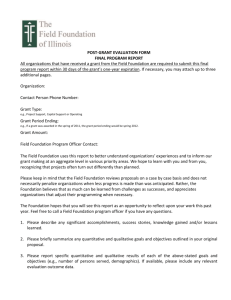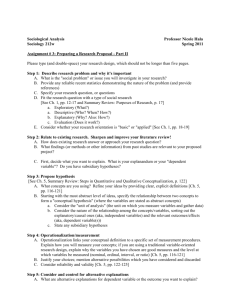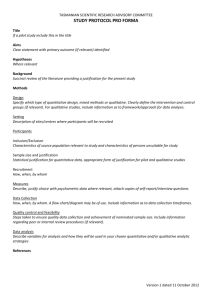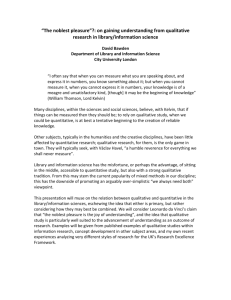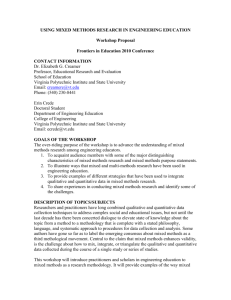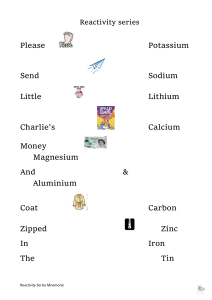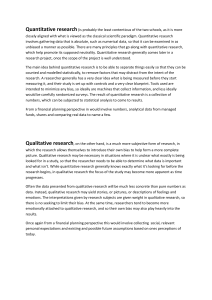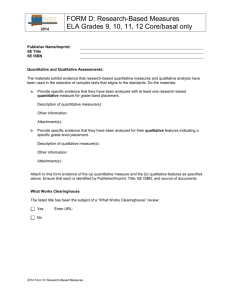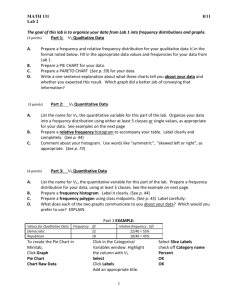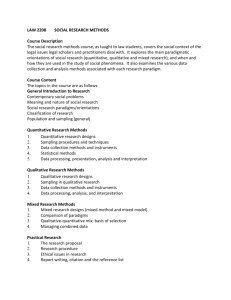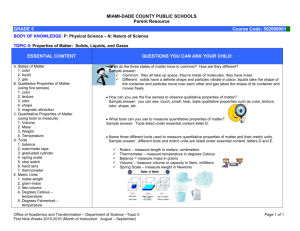Physical and Chemical Properties of Matter
advertisement
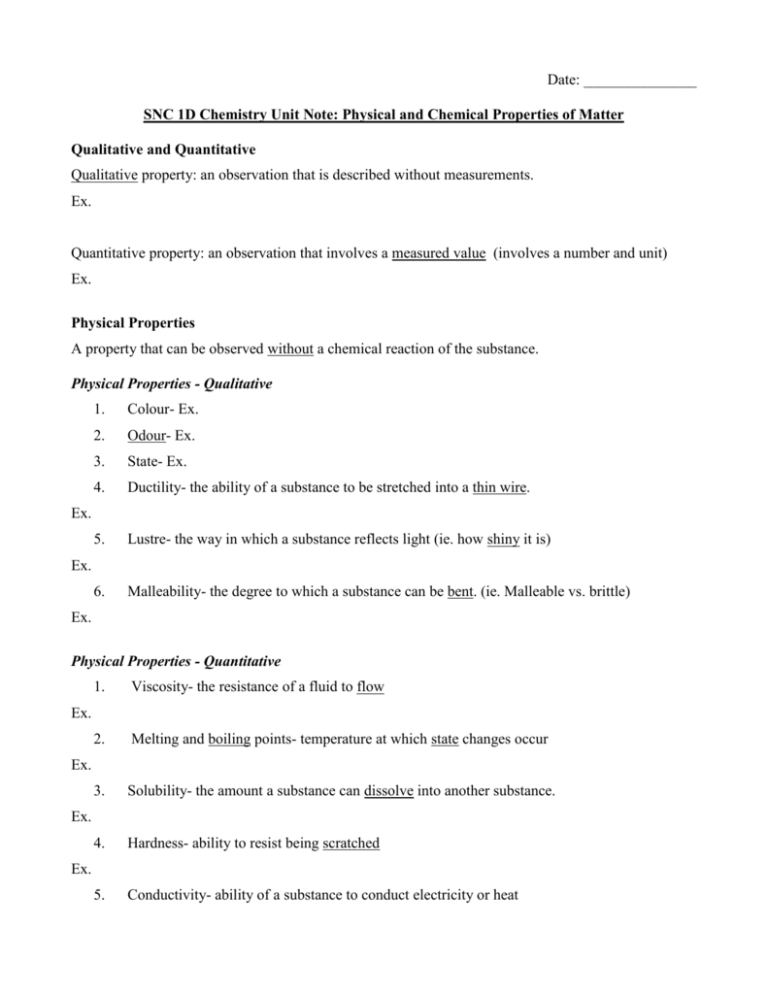
Date: _______________ SNC 1D Chemistry Unit Note: Physical and Chemical Properties of Matter Qualitative and Quantitative Qualitative property: an observation that is described without measurements. Ex. Quantitative property: an observation that involves a measured value (involves a number and unit) Ex. Physical Properties A property that can be observed without a chemical reaction of the substance. Physical Properties - Qualitative 1. Colour- Ex. 2. Odour- Ex. 3. State- Ex. 4. Ductility- the ability of a substance to be stretched into a thin wire. 5. Lustre- the way in which a substance reflects light (ie. how shiny it is) 6. Malleability- the degree to which a substance can be bent. (ie. Malleable vs. brittle) Ex. Ex. Ex. Physical Properties - Quantitative 1. Viscosity- the resistance of a fluid to flow 2. Melting and boiling points- temperature at which state changes occur 3. Solubility- the amount a substance can dissolve into another substance. 4. Hardness- ability to resist being scratched 5. Conductivity- ability of a substance to conduct electricity or heat Ex. Ex. Ex. Ex. Ex. 6. Density- amount of mass in a given volume of a substance Ex. Density of water is 1.0 g/mL Chemical Properties A chemical property describes the ability of a substance to react with another substance to form a new substance. Examples of Chemical properties… 1) Reactivity with other substances Eg. Reactivity with water Ex. Potassium metal is highly reactive with water Eg. Reactivity with acids Ex. Baking soda reacts with vinegar 2) Combustibility is the ability of a substance to burn. Ex. Helium does not burn while hydrogen burns explosively. 3)Stability and Toxicity The stability of a substance refers to how easily the substance breaks down (ie. decomposes). Ex. Arsenic is toxic to humans








